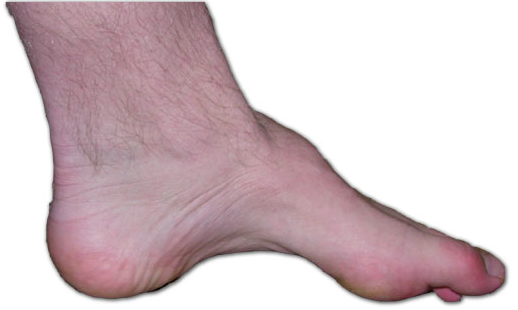Foot Drop After A Stroke
Many patients come to the Ledbrook Clinic experiencing foot drop after they have had a stroke, and the Ledbrook Clinic offers the full range of treatments for this condition.
How to treat Drop Foot after stroke
Every stroke is different, and so are its side effects. Some stroke survivors may face different types of paralysis and others might only deal with a slight speech impairment. Either way, all stroke survivors should be aware of the possible side effects of stroke, and foot drop is one of them.
What Is Foot Drop?
Foot drop involves difficulty lifting the front part of your foot, which is important for a natural gait, or stepping pattern. For this reason, foot drop makes walking difficult as it causes your foot to drop down toward the floor when you lift your leg up, possibly leading to foot scuffing or worse – falling.

Thankfully, there’s something you can do about foot drop, which we’ll get to in a second.
What Causes Foot Drop?
As you just learned, foot drop is caused by the inability to lift the front part of your foot up. However, this is usually a symptom of a larger, underlying problem like:
- Nerve injury
- Muscle or nerve disorders
- Stroke
- Multiple sclerosis
- Spinal cord injury
While you can’t reverse the underlying cause, the symptom of foot drop can be treated.
How Can Drop Foot Be Treated?
Foot drop can be treated with 3 different methods: muscle strengthening, orthotics, or electrical stimulation.
Muscle Strengthening
Muscle strengthening is a treatment option for foot drop when the foot still has some movement. Muscle strengthening exercises will focus on the muscles in your lower legs and ankles to help you regain the strength to pick up your foot. Some good exercises to try are ankle rolls, toe-to-heel rocks, and cycling.
When following this treatment option, aim for at least two 45-minute sessions per week – and be sure to stay dedicated to your rehab practice.
Drop Foot Orthotics
If there is no function in the foot muscles, one solution is ankle-foot orthotics (AFO’s) The Ledbrook Clinic has a wide range of AFO’s to suit every patient. It is very important to be fitted with the correct AFO to prevent devastating falls.
Functional Electrical Stimulation
Lastly, functional electrical stimulation can help correct foot drop by delivering small electric pulses to the nerves in the paralyzed muscles. Activating the muscles with electrical stimulation can reteach them how to function properly and promote a normal range of motion.
To determine what treatment option is best for you, contact the Ledbrook Clinic so that you can discuss your options. We recommend the WalkAide FES.
